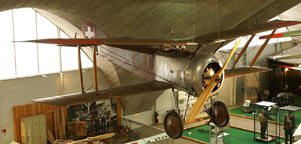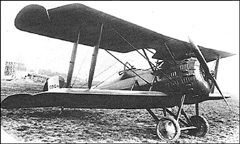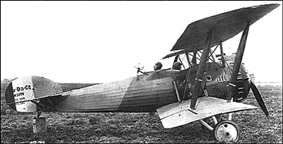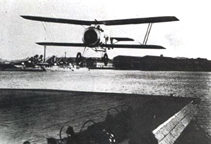August, 1961

Hanriot HD-1 or 3C-2 ?
Model Airplane News Cover Art for August, 1961
by Jo Kotula
Click to Enlarge
Rhe August, 1961 cover of Model Airplane News poses somewhat of a problem. The text on the cover reads "Hanriot 3C-2" but the plane depicted is the Hanriot HD-1. Jo Kotula, the artist, was clearly a master at drawing and the staff of M.A.N. included experts like William Wylam and Willis Nye who actually drew the blueprints for a whole lot of World War I airplanes. So, whether this apparent inconsistency is a typographical error or reflects an aircraft classification system that has changed in the 48 years since the cover was presented remains unknown. However, in the terminology of 2009 the letters "HD-1" refer to a single seat figher while "HD 3C-2" refers to a two-seat airplane. For safety sake, we'll just cover BOTH airplanes here.
Hanriot HD-1
The Hanriot HD.1 was a French World War I single seat fighter. Rejected for service with French squadrons in favour of the SPAD S.7, it was supplied to the Belgians and the Italians with whom it proved highly successful. 831 of a total production of about 1200 were in fact produced by Italian companies under licence.
The HD-1 was a conventional fighter with the general characteristics of a typical Sopwith type, being strongly but lightly built, and combining clean lines with a light wing loading. On the power of its 110 hp Le Rhone rotary it was not outstandingly fast, but it was very maneuverable and proved popular with pilots as a safe and pleasant aircraft to fly. To maintain a competitive climbing and altitude performance it proved necessary to restrict armament to a single synchronised Vickers gun, although two could be fitted, and occasionally were. The gun(s) were fitted to the side of the cockpit, and were accessible to the pilot without the butts being directly in front of his face in the event of a crash - an unusual but welcome feature.


Photos of the Hanriot HD-1
Click to Enlarge
Hanriot 3C-2
The two-seat Hanriot HD.3C-2 was similar in appearance to a scaled-up HD.1, it was a conventional, single-bay biplane with staggered wings of equal span. The pilot and gunner sat in tandem, open cockpits and the main units of the fixed tailskid undercarriage were linked by a cross-axle. Short struts braced the fuselage sides to the lower wing.
Flight testing revealed excellent performance, and the French government ordered 300 of the type in 1918, in preparation for a major offensive the following year. When the war ended, the contract was cancelled with around 75 aircraft having been delivered to the Aéronautique Militaire and at least 15 to the Aéronautique Maritime. One example was delivered to the Aéronautique Maritime in summer 1918 equipped with twin float undercarriage and a larger tailfin; it was intended that this would be the prototype of a dedicated floatplane fighter designated HD.4, but the war ended before any further development took place. The Armistice also led to the abandonment of a dedicated night fighter variant, the HD.3bis, with enlarged and balanced ailerons and rudder and with a wing of increased section.
After the war, one of the navy's machines was used for trials aboard the new aircraft carrier Béarn as shown in the photo below.


The Hanriot 3C-2 Two seat Fighter

Postwar Hanriot 3C-2 landing on the aircraft carrier Béarn
The Béarn spent WWII in harbor in Martinique
It is mentioned several times in the film To Have and Have Not
Click to Enlarge
Here is a video of the Hanriot 3C-2 in action:
Click Here for more information about the Hanriot 3C-2.

Click to go back and select another cover.
Counter for the Entire Site (not just this page..)
Home | About Lindy | Last Week's Reviews | Upcoming Events | 1940s Collecibles
The Guide - Establishments - Travel - Accessories
Music | Links | Photo Gallery | Extras | Contact